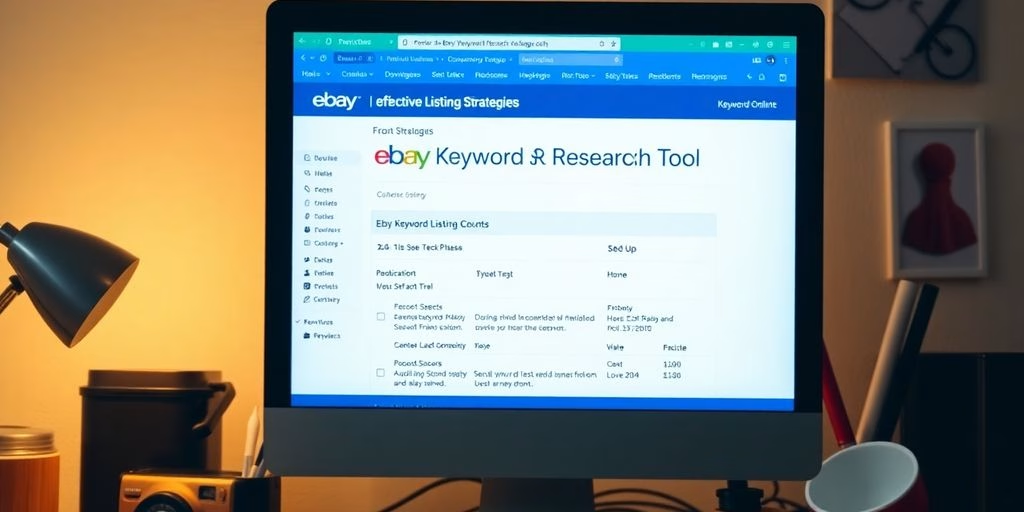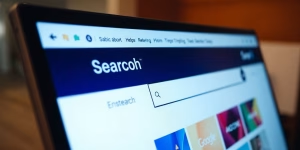Web crawling is a fundamental aspect of search engine technology, involving the systematic browsing of the internet by bots to index and rank web content. Mastering web crawling is essential for anyone looking to optimize their website for search engines.
This comprehensive guide explores the intricacies of web crawling, from understanding the basics to crafting a crawler-friendly site architecture. By delving into the science of web crawling, indexing strategies, and crawl budget management, we equip readers with the knowledge to improve their site’s visibility and performance in search engine results pages (SERPs).
Key Takeaways
- Web crawling is the process by which search engine bots discover and index web content, and its optimization is crucial for improving a website’s search engine rankings.
- Proper etiquette for crawlers and understanding the challenges of web crawling can prevent your site from falling into ‘sticky traps’ that hinder visibility.
- Indexing is akin to the Dewey Decimal system for the internet, and ensuring your pages are indexed correctly is essential for them to be found by users.
- Crafting a crawler-friendly site architecture and creating comprehensive sitemaps are vital steps in guiding search engines through your site’s content.
- Managing your crawl budget effectively ensures that search engine bots spend their resources wisely, indexing important content and improving your site’s SERP performance.
The Science of Web Crawling: Unraveling the Web’s Tapestry
Understanding the Web Crawling Threads: The Basics of Crawlers
At the heart of the web’s vast expanse lies the humble web crawler, a digital arachnid tirelessly weaving through the internet’s intricate silk threads. These automated bots, also known as spiders or crawlers, embark on a methodical journey to discover and index the web’s countless pages. Their mission is simple yet pivotal: to make the web’s information accessible and searchable.
Web crawling is not a haphazard adventure but a structured process. It typically involves several key steps: discovery of URLs, crawling to visit the pages, fetching page content, and rendering the pages for further processing. This systematic approach ensures that no stone is left unturned—or rather, no page is left unscanned. Here’s a quick rundown of what a crawler’s day looks like:
- Discovery: Identifying new and updated pages to visit.
- Crawling: Navigating through the web’s maze of links.
- Fetching: Retrieving the content of each page.
- Rendering: Processing the content to understand its structure and meaning.
Remember, while crawlers are incredibly efficient, they rely on a website’s architecture and signals to guide their journey. A well-structured site with clear navigation aids their quest, while obstacles like poor link structures can lead to the dreaded fate of being overlooked.
Crawlers come in different shapes and sizes, each with its own set of capabilities and objectives. From the all-encompassing General Purpose Crawling to the more targeted Focused crawling and the expansive Distributed crawling, these variations cater to the diverse needs of the digital ecosystem.
Good Web Citizen: Etiquette for Web Crawling
In the internet, crawlers are the diligent cartographers, mapping the vast digital terrain. To be a good web citizen, a web crawling maker must adhere to a set of unwritten rules, akin to the social mores that govern polite society. Respect for the robots.txt file is paramount, as it serves as the doorman, guiding crawlers to the areas open for exploration while barring them from private quarters.
Robots exclusion protocol is not just a suggestion; it’s a critical component of web etiquette. Before embarking on a data gathering expedition, ensure that your crawler is well-versed in the language of robots.txt. Here’s a quick checklist to keep your crawler on the straight and narrow:
- Check the
robots.txtfile for directives and adhere to them scrupulously. - Avoid hammering servers with rapid-fire requests; pace your crawler to be a considerate guest.
- Prioritize important pages to make efficient use of your site’s crawl budget.
- Keep your crawler’s footprint light and unobtrusive to ensure a harmonious coexistence with web servers.
By following these guidelines, your crawler will not only avoid the digital equivalent of social faux pas but also enhance its efficiency in navigating the web’s intricate networks.
Remember, a well-mannered crawler is not only a boon to your own data collection efforts but also contributes to the overall health and accessibility of the web. It’s a delicate dance between gathering information and maintaining the equilibrium of the internet’s ecosystem.
Avoiding the Web’s Sticky Traps: Challenges in Web Crawling
Navigating the labyrinth of the web without falling into crawler traps can be as tricky as walking through a spider’s web without getting stuck. These traps, sometimes referred to as “spider traps,” can ensnare your crawler, wasting precious resources and muddying your SEO efforts with duplicate content. Master XML sitemaps and robots.txt to set clear boundaries for crawlers and guide them efficiently through your site’s content.
To maintain a healthy relationship with search engines, it’s crucial to craft well-structured URLs and submit sitemaps for enhanced visibility.
Here are a few pointers to keep your crawler nimble and free from the sticky clutches of common web pitfalls:
- Regularly monitor and update your robots.txt to ensure it reflects the current structure of your site.
- Validate your XML sitemap to confirm that it’s error-free and up-to-date.
- Avoid overly aggressive crawling that can be perceived as spamming; pace your requests and add wait times.
- Focus on scraping public content to stay on the right side of ethical and legal boundaries.
Remember, a well-behaved crawler not only respects the rules of the web but also reaps the rewards of better SEO and higher rankings.
Web Crawling the Internet’s Infinite Shelves

Decoding the Dewey Decimal of the Digital Age: SEO Web Crawling Explained
In the labyrinth of digital libraries we call the internet, SEO indexing is akin to the Dewey Decimal system, providing a methodical way for search engines to categorize and retrieve web pages. Indexing is the cornerstone of SEO, transforming your website from a hidden manuscript to a referenced volume on the virtual shelves of search engines.
To ensure your pages are not just mere whispers in the digital winds, consider these steps:
- Ensure a clean, crawlable site structure: A well-organized site is like an open book to search engines.
- Utilize schema markup: It’s like a secret code that whispers directly to search engines, enhancing the visibility of your content.
- Regularly monitor your indexing status: Keep an eye on your digital footprint with tools like Google Search Console.
Remember, a well-indexed site is more than just being present; it’s about being prominent in the sea of digital content.
By weaving these practices into the fabric of your SEO strategy, you can help search engines understand and value your content, paving the way for increased visibility and, ultimately, a stronger connection with your audience.
The Checklist Manifesto for Web Crawling
In the grand tapestry of the web, your pages are threads vying for attention. To ensure they weave into the visible pattern of search results, a checklist is your loom. Start with the basics: ensure your meta tags are descriptive and your content is fresh. Remember, search engines have a penchant for the up-to-date and relevant.
Avoid common SEO errors like keyword stuffing; instead, focus on natural keyword use. On-page optimization isn’t just a buzzword—it’s the bread and butter for enhancing content visibility. This includes headers, meta tags, and the often-overlooked image optimization.
To be indexed is to be found. To be found is to have the opportunity to meet your audience where they search.
Lastly, don’t forget the technicalities. Canonical tags help avoid duplicate content dilemmas, and schema markup can elevate your content’s visibility in search results. Here’s a simple list to keep your indexing on track:
- Verify your site’s content is current and relevant.
- Use descriptive meta tags and canonical tags.
- Implement schema markup for better SERP visibility.
- Regularly monitor your indexing status with tools like Google Search Console.
The Great Library Card Mystery: Verifying Your Site’s Index Status
Just as a librarian must ensure every book is accounted for, a webmaster must verify that search engines have indexed their site’s pages. The quest to confirm your site’s presence in the digital library is akin to solving a great mystery. But fear not, for the clues are within reach. To embark on this detective work, you’ll need to familiarize yourself with a few essential tools and techniques.
Firstly, the Google Search Console is your magnifying glass. It allows you to peer into the inner workings of Google’s indexing process. Here’s a quick rundown of steps to check your index status:
- Navigate to the “Coverage” report under the “Index” section.
- Observe the number of pages indexed and any accompanying labels.
- Investigate any errors or warnings and take action to resolve them.
Remember, a clean bill of health from Google Search Console is a strong indicator that your pages are well within the SERP’s grasp.
Additionally, the use of search operators can provide a snapshot of your site’s indexation. Simply type site:yourdomain.com into the search bar and see the magic unfold. Pages that appear in the results are part of Google’s index; those that don’t may require further scrutiny. Lastly, don’t forget to check your sitemap.xml, ensuring it’s up-to-date and free of errors, as it serves as a roadmap for search engine bots.
Crafting a Crawler-Friendly Site Architecture

Building a Bot’s Paradise: The Importance of a Logical Web Crawling
In the realm of digital real estate, a logical site structure is the foundation upon which a bot’s paradise is built. Just as a meticulous gardener prunes and shapes the hedges into a labyrinthine masterpiece, so must a webmaster sculpt the architecture of a site to ensure that search engine crawlers can glide through with ease.
- URL slugs should be short, descriptive, and relevant for SEO.
- XML sitemaps are helpful but not essential for SEO success.
- Consider sitemaps for large websites with frequent updates.
A streamlined site structure is not just a luxury; it’s a necessity for ensuring that your digital domain is easily navigable, both for your human visitors and the automated explorers sent out by search engines.
Remember, a well-organized site doesn’t happen by accident. It’s the result of careful planning and execution. Ensure that your content is logically categorized, navigation is intuitive, and that each internal page is no more than a few clicks away from home. By doing so, you’ll not only create a bot’s paradise but also a user’s haven.
Renovating Your Digital Domain: Tips for Web Crawling Optimization
Think of your website as a house where every page is a room. Just as you wouldn’t want your guests wandering aimlessly looking for the bathroom, you don’t want your visitors lost in a maze of links. Optimizing your site structure is like putting up clear signposts and ensuring a logical flow from room to room—or in this case, from page to page.
- URL Structure: Craft descriptive and user-friendly URLs that reflect the content hierarchy.
- Navigation: Design intuitive navigation menus that guide both users and search engine bots.
- Internal Linking: Connect your content with meaningful internal links, creating a network that search engines can follow with ease.
By focusing on these elements, you’re not just renovating your digital domain; you’re building a mansion that invites guests to stay, explore, and return.
Remember, a well-structured website not only enhances user experience but also boosts your site’s visibility. Strategic adjustments to your internal links, on-page SEO, and content strategy can significantly improve your site’s SEO value and user engagement. It’s about making your site not just crawlable, but irresistible to search engines.
The Final Brick: Wrapping Up Site Structure Optimization
With the mortar of your content firmly set, it’s time to lay the final brick in your site structure optimization. Remember, a well-structured website is not just about making it look pretty for your visitors; it’s about crafting a digital labyrinth that search engines can navigate with ease.
- Optimize URL slugs for SEO by keeping them short, relevant, and free of stop words.
- Consider using XML sitemaps for large websites with frequent updates.
- Keywords should be integrated for both robots and humans, ensuring they guide your visitors just as well as they guide search engine crawlers.
By now, you should have a robust framework that supports both the user journey and the relentless bots that power search engines. Dive into content audit strategy to categorize, optimize, and tailor content for user journey and SEO. Maximize data asset value with technology, monitoring, and optimization.
As you step back to admire your handiwork, don’t forget that the digital world is ever-changing. Regular check-ups and tweaks are essential to maintain the health of your site’s architecture. Keep your tools sharp and your mind sharper, for the web is an endless frontier, and your site is the beacon that guides visitors through the night.
Charting a Path for Search Engines

Sitemaps 101: The Treasure Maps of the Internet
Think of a sitemap as the compass that guides search engines through the labyrinth of your website’s content. Boldly declaring ‘Here be dragons,’ a sitemap lays out the terrain, ensuring that no treasure—be it a blog post or a product page—remains buried and undiscovered by the digital explorers we call crawlers.
By meticulously charting each nook and cranny, sitemaps facilitate the search engines’ quest to index the web’s vast expanse.
Creating a sitemap isn’t just about drawing a map; it’s about crafting a master key that unlocks the doors to search engine attention. Here’s a quick treasure hunter’s checklist for your sitemap:
- Include all important pages, ensuring they’re findable and indexable.
- Regularly update the sitemap to reflect new content or changes.
- Verify that your sitemap is free of errors and only lists pages with a 200 status code.
- Submit your sitemap to search engines to signal that you’re ready for visitors.
Drawing the Map: Best Practices for Sitemap Creation
Creating a sitemap is akin to drawing a treasure map for search engines, where X marks the spot of your most valuable content. Ensure your sitemap is a beacon, not a foghorn, guiding search engines with clarity and precision. Here are some best practices to ensure your sitemap is shipshape:
- Generate the XML Sitemap: Use a sitemap generator tool to create a comprehensive map that includes all relevant pages. Remember, not all pages are treasure-laden; some are mere pebbles on the beach.
- Verify the XML Sitemap: Before you hoist your sitemap up the flagpole, validate it using tools like Google Search Console. A sitemap riddled with errors is like a map with missing pieces.
- Submit to Search Engines: Once your sitemap is polished and ready, submit it to the search engines’ webmaster tools. It’s like sending an invitation to explore your digital domain.
Remember, a well-crafted sitemap not only aids search engines but also enhances the user experience. Strategic internal linking is the compass that guides visitors through your website’s landscape.
By adhering to these best practices, you’ll ensure that your sitemap is not just a document, but a dynamic guide that evolves with your website. Keep it updated, and the search engines will reward you by discovering and indexing your pages more efficiently.
Submitting Your Sitemap for Maximum Discovery
Once you’ve charted the digital seas and your sitemap is shipshape, it’s time to drop anchor in the search engines’ harbors. Submitting your sitemap is akin to handing over a treasure map to the web’s cartographers, guiding them through the labyrinth of your site’s content. Here’s how to ensure your sitemap is not just a message in a bottle, lost in the vast ocean of data:
- Generate the XML Sitemap: Craft a comprehensive map with all the essential URLs. Tools and plugins are your first mates in this endeavor.
- Verify the XML Sitemap: Before setting sail, check for leaks. Validation tools like Google Search Console are your compass for navigating potential errors.
- Submit to Search Engines: Hoist your sitemap onto the deck of Google, Bing, and Yahoo through their webmaster tools. It’s the signal flare that gets you noticed.
By optimizing your sitemap and keeping it updated, you’re not just making your site discoverable; you’re ensuring it’s explored thoroughly and often.
Remember, the internet is an ever-changing sea. Regularly update your sitemap to include new pages and cast away the old, ensuring that search engines always have the most current chart of your online realm.
Web Crawling Budget Economics

Understanding the Currency of Web Crawling: What is a Web Crawling Budget?
Imagine a world where search engines have unlimited resources to explore every nook and cranny of the web. A utopian idea, but alas, in the real world, search engines operate on a budget. Not the kind that involves dollars and cents, but a crawl budget. This is the allotment of resources a search engine dedicates to navigating a site.
To ensure your site’s pages are the belle of the ball at the search engine gala, you must optimize for this budget. Here’s a quick rundown on how to become the master of your domain (quite literally):
- Improve Site Speed: Like a fast-paced tango, search engines favor quick-loading pages.
- Fix Crawl Errors: Address the pesky 404s and server issues that can lead to a wallflower status in search results.
- Prioritize Content: Spotlight your most valuable content to catch the search engine’s roving eye.
By mastering these steps, you can ensure that your site’s pages are not just present, but prominent in the search engine’s dance card.
Balancing the Books: Techniques for Optimizing Your Web Crawling Budget
Just like a shrewd accountant finds ways to save pennies, a savvy webmaster must find ways to save crawl budget. Optimizing your crawl budget isn’t just about tightening the belt; it’s about spending wisely and getting the most bang for your buck. Here’s how to ensure your website’s pages are the belle of the ball at the search engine gala:
- Improve Site Speed: A swift site is a search engine’s best friend. Ensure your pages load faster than a caffeinated cheetah to grab the crawler’s attention.
- Strategic Internal Linking: Create a web of internal links that spiders can’t resist. This not only helps users navigate your site but also guides crawlers to your most important pages.
- Manage URL Parameters: Tame the wild beasts of URL parameters through Google Search Console to prevent them from leading crawlers astray.
By implementing these techniques, you can ensure that search engine bots focus on crawling and indexing the most important pages, thus improving your website’s visibility and performance in search results.
Remember, a well-optimized site doesn’t just happen; it’s the result of meticulous planning and execution. Keep your digital domain in tip-top shape, and watch the crawlers line up for a dance!
Audit Time: Monitoring and Adjusting Your Web Crawling Budget Investments
Think of your website as a bustling metropolis, and your crawl budget as the city’s energy supply. Just as a city planner would audit and adjust the power grid to keep the lights on in all the right places, a savvy webmaster must regularly monitor and tweak the crawl budget to illuminate the most valuable districts of their online domain. Regular audits ensure that your site’s SEO doesn’t dim.
To keep your website’s performance and visibility in the spotlight, consider these steps:
- Review your site’s analytics to identify high-traffic areas and prioritize them for crawling.
- Analyze server logs to spot any crawl anomalies or wasted resources.
- Utilize tools like Google Search Console to fix crawl errors and enhance efficiency.
Remember, a well-audited crawl budget is the linchpin in the machinery of digital marketing strategies. It’s not just about keeping the bots busy; it’s about directing them with purpose.
By fine-tuning your approach, you can ensure that search engine bots are more likely to focus on crawling and indexing the pages that will boost your ROI and strengthen your online presence. After all, in the grand scheme of the web’s tapestry, every thread counts—especially those woven with the insights from various articles on SEO, link building, and digital marketing strategies.
Maximizing your website’s crawl budget is crucial for ensuring search engines can efficiently index your content. By understanding and optimizing how search engine bots crawl your site, you can improve your online visibility and drive more traffic. Don’t let your site’s potential go to waste. Contact us now to learn more about crawl budget economics and how to allocate your digital resources effectively. Let’s work together to make your website a success!
Conclusion
As we’ve crawled through the intricate web of technical SEO, we’ve unearthed the pivotal role that web crawling, indexing, and site structure play in the grand scheme of digital visibility. Like a well-organized library, a website must be meticulously indexed to ensure that search engines can effortlessly peruse its pages and present them to the eager information-seekers of the online world. Remember, a website that whispers its presence to search engines is akin to winking in the dark—effective only in theory. So, don your digital spelunking gear and embark on the continuous journey of optimization. May your pages always be found, and your content forever crawlable!
FAQs
What is Web Crawling in SEO?
Web crawling in SEO refers to the process by which search engine bots navigate the web to discover and index web pages. These bots follow links from page to page, collecting data about each page’s content, structure, and metadata.
How can I optimize my website for web crawling?
To optimize your website for crawling, ensure that your site’s structure is logical, use a comprehensive XML sitemap, implement proper use of robots.txt, and follow technical SEO checklists to make your content easily accessible to search engine bots.
What is Indexing in SEO?
Indexing in SEO is the process of adding web pages into a search engine’s collection of indexed pages. Once a page is indexed, it becomes eligible to be displayed as a result in search queries.
How do I ensure my web pages are properly indexed?
To ensure proper indexing, use clear and relevant titles and descriptions, optimize content for relevant keywords, submit an XML sitemap to search engines, and check index status using tools like Google Search Console.
Why is site structure important for SEO?
A well-organized site structure helps search engines understand the hierarchy and relationship between different pages on your site, which can improve crawling efficiency and contribute to better indexing and higher search rankings.
What is a crawl budget and how do I optimize it?
A crawl budget is the number of pages a search engine bot will crawl on your site within a given timeframe. Optimize your crawl budget by improving site speed, eliminating duplicate content, and managing redirects and broken links.

![A Comprehensive Guide to Google Play Console Pricing [n8n]](https://cworks.id/wp-content/uploads/2025/09/cover-image-24622.avif)
![Understanding the Google Play Console Price: What Developers Need to Know [arvow]](https://cworks.id/wp-content/uploads/2025/05/4755037cthumbnail.avif)






































































































